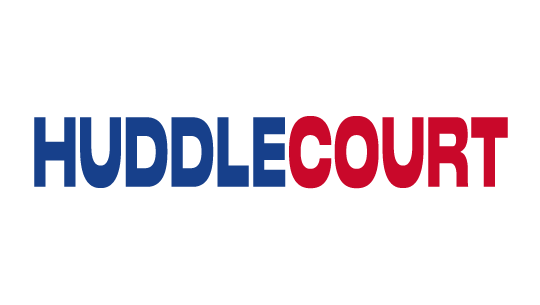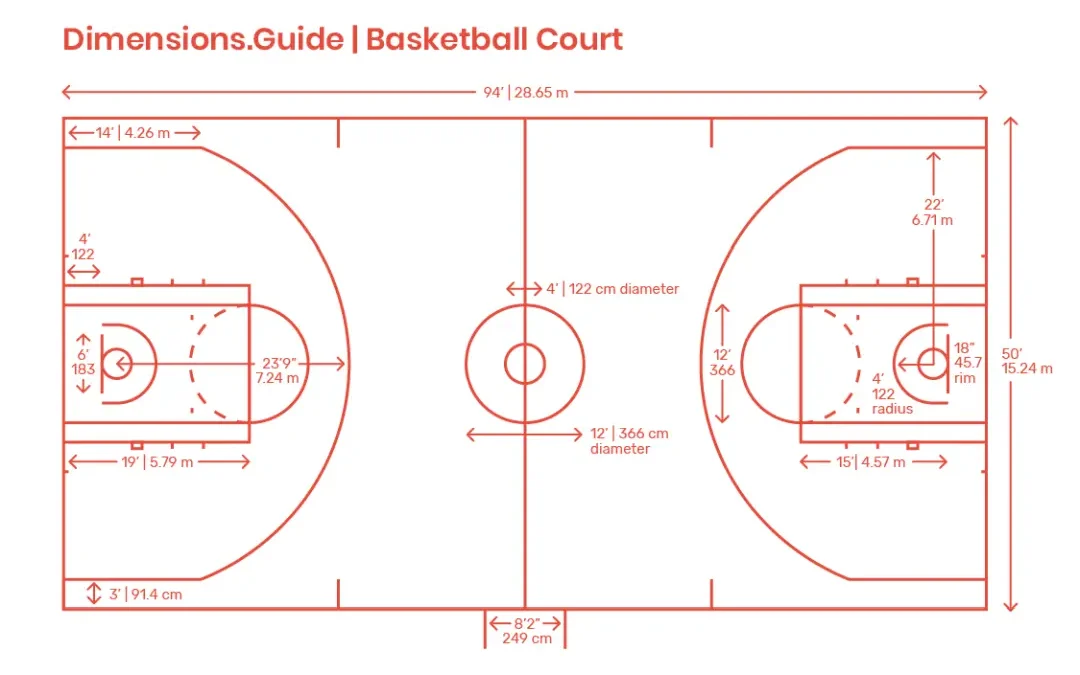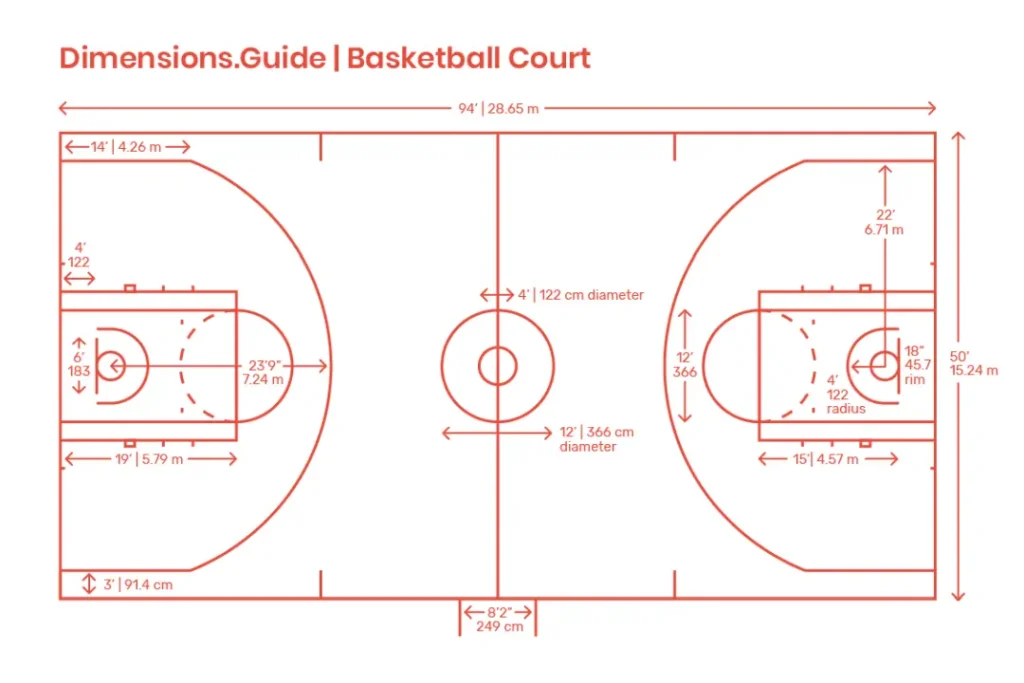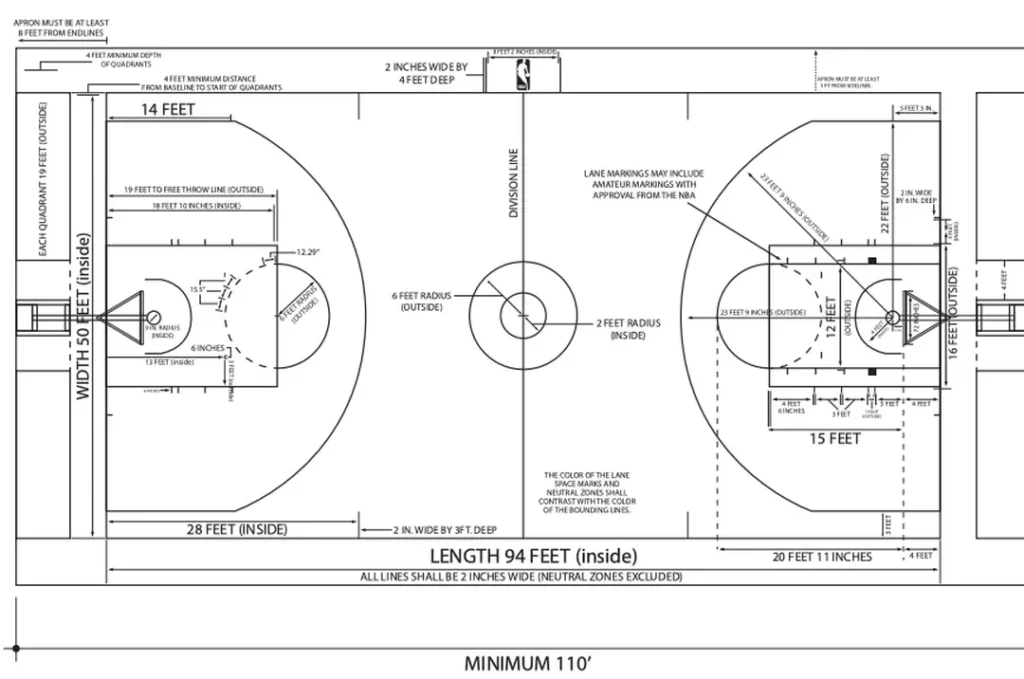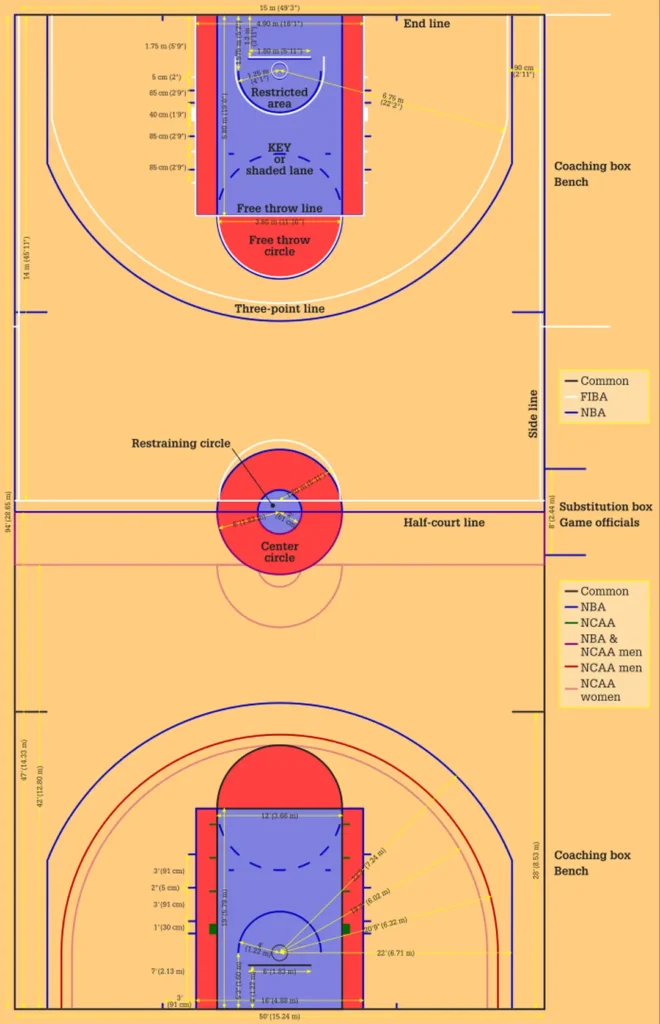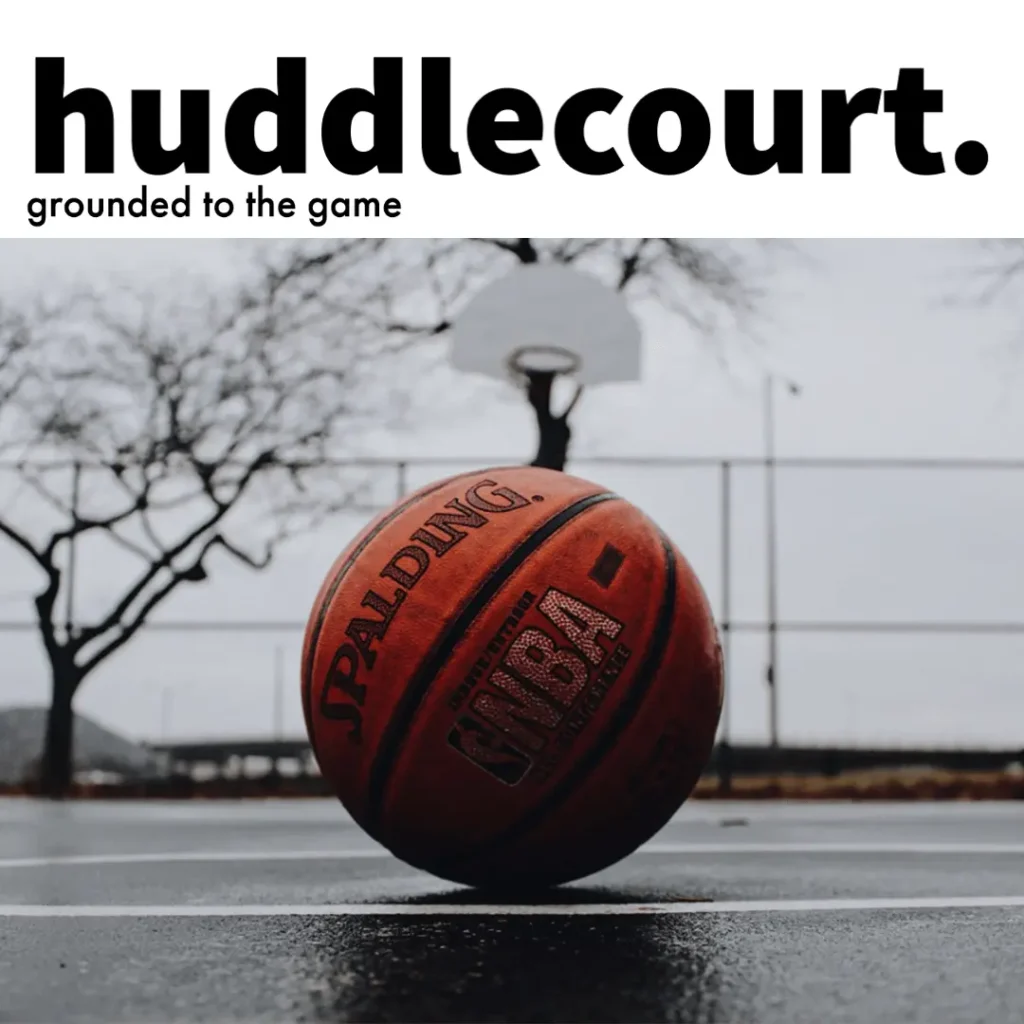Are you looking to master the art of basketball and take your game to the next level? One of the essential factors in becoming a great basketball player is having access to a regulation basketball court. Whether you’re playing for fun or competition, it’s essential to understand the proper dimensions for a basketball court to optimize your performance.
In this post, we’ll dive into everything you need to know about regulation basketball court dimensions, including the various regulations from organizations like the NBA and FIBA. We’ll also compare the worldwide regulations and provide tips on how to optimize your game by following these dimensions. So, get ready to take your game to the next level and master the art of regulation basketball court dimensions!
Reviewed Topics
Standard Regulation Basketball Court Dimensions
When it comes to mastering the art of basketball, having a regulation-sized court is crucial. The standard regulation basketball court dimensions are set by the National Basketball Association (NBA) and the International Basketball Federation (FIBA). These dimensions are essential to ensure that the court is balanced and fair for both teams.
The standard regulation basketball court dimensions for the NBA are 94 feet long and 50 feet wide, with the hoop placed 10 feet above the floor. The key area is 16 feet wide, and the three-point line is 22 feet away from the basket. The free-throw line is 15 feet away from the hoop.
For FIBA, the standard regulation basketball court dimensions are a bit different. The court is 28 meters long and 15 meters wide, with the hoop placed 3.05 meters above the floor. The key area is 5.8 meters wide, and the three-point line is 6.75 meters away from the basket. The free-throw line is 4.6 meters away from the hoop.
To ensure that your basketball court is regulation-sized, it’s important to take accurate measurements and paint the lines accordingly. Installing a basketball hoop at the proper height is also crucial. With the right measurements and a good quality basketball hoop, you can create the perfect outdoor basketball court for hours of fun and practice.
NBA Regulation Basketball Court Dimensions
NBA regulation basketball court dimensions are slightly different from FIBA regulations. The length of the court is the same, 94 feet, but the width is shorter at 50 feet compared to FIBA’s 52.5 feet. The NBA three-point line is also further from the basket at 23 feet, 9 inches compared to FIBA’s 22 feet, 1.75 inches.
In addition, the NBA key or restricted area is a rectangular shape that measures 16 feet wide and extends 15 feet from the baseline towards the center of the court. This is larger than FIBA’s key which is a trapezoid shape that measures 19.69 feet at the baseline and 11.81 feet at the free-throw line.
It’s important to keep these differences in mind when painting a basketball court or installing a basketball hoop according to NBA regulations. Additionally, it’s important to choose the best outdoor basketball that is appropriate for NBA regulations to ensure a proper playing experience.
FIBA Regulation Basketball Court Dimensions
FIBA, the International Basketball Federation, has its own set of regulations for basketball court dimensions that differ slightly from the NBA regulations. The court dimensions for FIBA are as follows:
The length of the court is 28 meters (91.9 feet).
The width of the court is 15 meters (49.2 feet).
The free throw line is located 5.8 meters (19 feet) from the backboard.
The three-point line is located 6.75 meters (22.1 feet) from the center of the basket for international games, and 6.6 meters (21.6 feet) for youth games.
The key or restricted area is a trapezoidal shape with a baseline width of 3.6 meters (11.8 feet), a free throw line width of 5.8 meters (19 feet), and a top width of 6 meters (19.7 feet).
It’s important to note that while the dimensions differ slightly from the NBA regulations, the layout and markings of the court are generally the same. If you’re looking to paint a basketball court or install a basketball hoop that meets FIBA regulations, it’s recommended to consult with a professional or refer to official FIBA guidelines.
Worldwide Regulation Comparison of Basketball Court Dimensions
When it comes to regulation basketball court dimensions, it’s important to note that different organizations have their own set of standards. In this section, we will compare the regulations of various basketball organizations around the world.
The NBA and FIBA regulations we discussed earlier are the most widely recognized standards for basketball court dimensions. However, there are other organizations that have their own unique regulations.
For example, the International Basketball Federation of the Americas (ABASU) has slightly different court dimensions than FIBA. ABASU mandates a court size of 28 meters by 15 meters, which is slightly smaller than the FIBA court. The key area in ABASU is also slightly smaller, measuring 4.9 meters by 5.8 meters.
In Europe, the Euroleague has its own set of regulations, which are almost identical to those of FIBA. However, the Euroleague mandates that the court must have a minimum ceiling height of 7 meters, whereas FIBA requires a minimum of 6.75 meters.
It’s also worth noting that the NCAA has different court dimensions than the NBA and FIBA. The NCAA requires a court size of 94 feet by 50 feet, which is slightly larger than the NBA court. The three-point line in the NCAA is also farther from the basket than the NBA’s three-point line.
Understanding the different regulations for basketball court dimensions is important for players, coaches, and court builders. By knowing the specific requirements of the organization you’re playing or building for, you can ensure that you’re following the proper guidelines and creating the best possible basketball experience.
Alternative Basketball Court Dimensions
Alternative basketball court dimensions may be required in certain situations, such as when space is limited or when building a court for younger players. These alternative court dimensions may differ slightly from regulation basketball court dimensions, but can still provide a great playing experience.
For example, a half court can be a great option when space is limited, and can still accommodate games of two-on-two or three-on-three. You can also consider modifying the dimensions of the court to fit a smaller space, but keep in mind that it may affect gameplay and ball movement.
If you’re building a basketball court for younger players, it may be best to use modified court dimensions to accommodate their skill level and height. This can include lowering the height of the basketball hoop or shortening the court length.
When painting a basketball court or installing a basketball hoop, it’s important to consider the specific dimensions required for the type of court you’re building. By understanding the regulations and alternative options available, you can create a basketball court that is tailored to your specific needs and preferences. Whether you’re playing with friends, family, or competing in a league, the best outdoor basketball experience starts with a well-designed court that fits your needs.
Building a Basketball Court
Building a basketball court can be a fun and rewarding experience, but it requires careful planning and preparation. To get started, you’ll need to choose the right location for your court and ensure that the ground is level and free of any obstacles.
Once you’ve chosen the location, it’s time to measure out the dimensions for your regulation basketball court. This will involve using a tape measure or other measuring tool to mark out the length and width of the court, as well as the locations of the foul line and three-point line.
Once you’ve marked out the dimensions, you can start preparing the ground for your court. This may involve digging out the area and leveling the ground to ensure that it’s flat and even. You may also need to add a layer of gravel or other base material to provide a stable foundation for your court.
Next, it’s time to install your basketball hoop. You’ll need to follow the manufacturer’s instructions carefully, ensuring that the hoop is securely anchored in the ground and that the backboard is level. This will ensure that your hoop is safe and durable, and that it provides a consistent playing experience.
Finally, it’s time to paint your basketball court. This is an important step, as it will help to define the boundaries of the court and make it easier to see the different lines and markings. You can use a basketball court stencil kit to ensure that your lines are straight and accurate, and you can choose from a wide range of colors to make your court unique and visually appealing.
Overall, building a basketball court can be a challenging but rewarding experience. With the right preparation and attention to detail, you can create a court that provides hours of fun and entertainment for you and your family. So what are you waiting for? Get your game on and start building your own regulation basketball court today!
Maintaining a Basketball Court
Once you have built your regulation-sized basketball court, it’s important to maintain it properly to ensure it stays in good condition and remains regulation-compliant. In this section, we’ll provide you with some tips and advice for maintaining your court.
Cleaning:
Regular cleaning of your court is essential to keep it in good condition. Sweep the court regularly to remove any debris, leaves or dust that might have accumulated on the surface. You can also use a leaf blower to remove any stubborn debris or a power washer to clean the court thoroughly. Be sure to follow the manufacturer’s instructions if you use a power washer.
Repairing:
It’s important to inspect your basketball court regularly and repair any damage as soon as possible to avoid it getting worse. Inspect the surface for any cracks, holes or damage to the surface. Small cracks or holes can be filled with court repair compound, which can be found at your local hardware store. For more significant damage, you may need to hire a professional to repair the court.
Resurfacing:
Over time, your basketball court will begin to show signs of wear and tear, which may require a resurfacing. The frequency of resurfacing will depend on factors such as the usage, weather conditions, and quality of the original surface. Typically, a court should be resurfaced every 5-7 years. It’s important to hire a professional to do the resurfacing as they have the equipment and expertise to do the job properly.
Resources:
If you need more information on maintaining your basketball court, there are many resources available to help. Your local hardware store or home improvement center can provide you with tips and advice on cleaning and repairing your court. You can also find many resources online, including instructional videos and articles. Finally, if you’re unsure about any aspect of maintaining your court, it’s always a good idea to consult with a professional. They can provide you with the guidance you need to keep your court in top condition.
Why it is important to understand the regulation of basketball court dimensions?
In conclusion, understanding the standard regulation basketball court dimensions is essential for building and maintaining a court that will provide the best possible playing experience. From the size of the court to the height of the basketball hoop, every element contributes to the overall quality of the game.
We have covered the NBA and FIBA regulation court dimensions, alternative court sizes, and tips for building and maintaining a court. By following these guidelines and tips, you can create a court that meets the official standards and provides a safe and enjoyable playing experience.
Remember, building and maintaining a basketball court is an investment, but the benefits are worth it. You can enjoy playing with your family and friends or even start your own team. So, go ahead and get your game on with a well-built and well-maintained basketball court!
- Top 5 Thrilling Moments of the MLS Cup Playoffs 2024 You Can’t Miss!
- Unstoppable Teams: 10 Shocking Shifts in the Latest NBA Power Rankings
- NFL Week 9 Predictions, Odds, and Expert Picks
- The Ultimate Guide: 50 Exciting Key Dates for the 2024-25 NBA Season
- NBA Power Rankings Week 2: Surging Lakers Shake Up the Standings!
